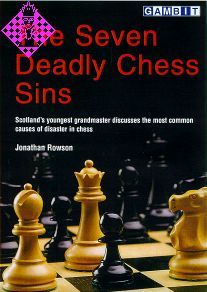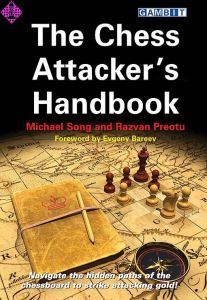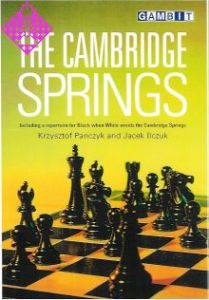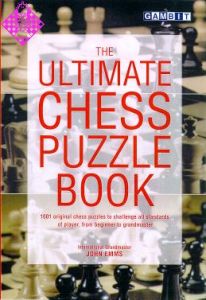Everyone loses chess games occasionally, but all too often we lose a game due to moves that, deep down, we knew were flawed. Why do we commit these chess-board sins? And how can we recognize the warning signs better?
In thus thought-provoking and entertaining book, Jonathan Rowson investigates, in this inimitable style, the main reasons why chess-players sometimes go horribly astray, focusing on the underlying psychological pitfalls:
- Drifting (losing the plot)
- Perfectionism (leading to time-trouble)
- Egoism (overestimating your chances)
- Failure to spot the critical moment
- "Deafness" (failure to listen to intuition)
- Dogmatism (failure to think creatively or dynamically)
- Attachment (to particular ideas)
Everyone loses chess games occasionally, but all too often we lose a game due to moves that, deep down, we knew were flawed. Why do we commit these chess-board sins? And how can we recognize the warning signs better?
In thus thought-provoking and entertaining book, Jonathan Rowson investigates, in this inimitable style, the main reasons why chess-players sometimes go horribly astray, focusing on the underlying psychological pitfalls:
- Drifting (losing the plot)
- Perfectionism (leading to time-trouble)
- Egoism (overestimating your chances)
- Failure to spot the critical moment
- "Deafness" (failure to listen to intuition)
- Dogmatism (failure to think creatively or dynamically)
- Attachment (to particular ideas)
| Weight | 400 g |
|---|---|
| Manufacturer | Gambit |
| Width | 17.2 cm |
| Height | 25 cm |
| Medium | Book |
| Year of Publication | 2000 |
| Author | Jonathan Rowson |
| Language | English |
| ISBN-10 | 1901983366 |
| ISBN-13 | 9781901983364 |
| Pages | 208 |
| Binding | paperback |
| Diagrams | 140 |
5 Symbols
6 Acknowledgements
8 Bibliography
10 Extended Preface: The Map, but not the Territory
191 Thinking
23 Thinking about Thinking
23 The Problem of the Patterns
25 Introducing Intuition
34 Vision
36 Evaluating Value
40 Cultivating Intuition
44 The Trappings of Analogy
46 Confused about Confusion?
50 Humour and Hedonism
54 The Tao of Chess Thinking
562 Blinking
59 Transformations: Signs, Signals and Sensitivity
66 Resolving to be Resolute
74 Contradiction at the Heart of Chess?
81 Drums without Symbols
853 Wanting
89 What are You Playing For?
90 Go with Flow
91 Gumption
92 'Plus Equals Mode'
99 The Theory of Infinite Resistance
103 Putting the Ball in the Back of the Net
1064 Materialism
110 What's the Point?
116 Exceptional Chess
123 Are We More Materialistic than Computers?
127 'Angst'
131 Blocks of Wood or Bundles of Energy? The E = mc² of Chess
135 The Four Dimensions of Chess
1425 Egoism
144 Subjects and Objects
149 'Inter-Subjectivity'
153 Responsibility
156 Populist Prophylaxis
161 Other Faces of Egoism
167 'Copy-Cat Crime'
169 Bread, Butter, and Jam
170 The Causes of Time-Trouble (and a few remedies)
174 Pragmatism
178 Confidence
1837 Looseness
183 'Tension Transference' and 'Neural Hijackings'
187 A Quick Survival Guide to Time-Trouble
188 Drifting and 'Slippage'
193 Finding the Plot
197 'Echoes'
203 The Art of Concentration
205 Conclusion: The Author's Redemption
206 Index of Players
208 Index of Openings
Ein Buch von enormer gedanklicher Frische. Schon bei Understanding the Grunfeld (1999) war der junge schottische Großmeister durch seine originellen Denkansätze aufgefallen, in seinem aktuellen Werk weiß er sich sogar noch zu steigern. Das Buch ist angesiedelt zwischen Schachpsychologie und Spielpraxis. Rowson stellt zunächst einige Klassiker der Schachpsychologie mit ihren unter heutigen Gesichtspunkten unzureichenden Schlussfolgerungen dar und entwickelt dann seine eigenen Ansätze. Anhand diverser Partiebeispiele zeigt er sieben "Todsünden" auf, u. a. "unnötiges" Denken (besser auf die Intuition vertrauen!), den (schädlichen) Hang zum Perfektionismus, Gier, Egoismus usw. Gerade diejenigen Leser, die sich für schachlich gebildet halten, werden sich ertappt fühlen. z. B. dann, wenn man "moralisiert", indem man meint, bestimmte Stellungen müssten in dieser oder jener Art gespielt werden (es steht ja so in den Lehrbüchern!), der völlig unbelesene/ungebildete Gegner indes ganz andere Vorstellungen hat. Aber vielleicht ist in Wirklichkeit ja derjenige "dumm", der meint, auf jede Stellung Schablonen anwenden zu müssen. Ein Buch, das gerade den "Wissenden" zeigt, warum sie in der Praxis oft nicht so erfolgreich sind. Trotz diverser Längen hat mir das Buch viel Lesespaß bereitet. Voraussetzung sind gehobene Englischkenntnisse (nicht selten versagt sogar das Wörterbuch) und eine Spielstärke ab ca. DWZ 1800.
Harald Keilhack, Schach 02/2002
-
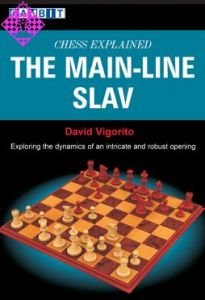 The Main-Line Slav€15.95
The Main-Line Slav€15.95 -
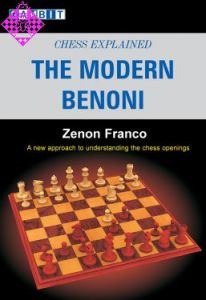 The Modern Benoni€15.95
The Modern Benoni€15.95 -
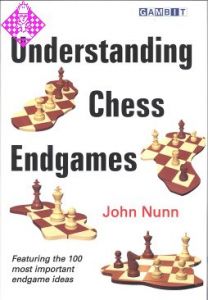 Understanding Chess Endgames€24.50
Understanding Chess Endgames€24.50 - More from Gambit

